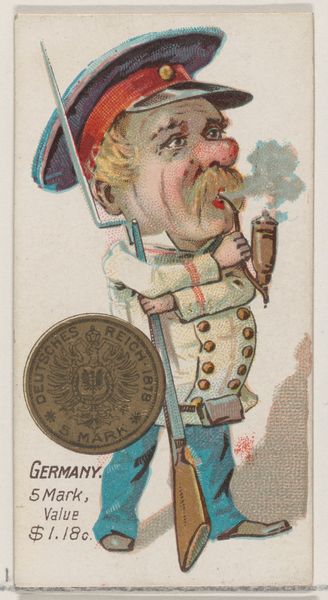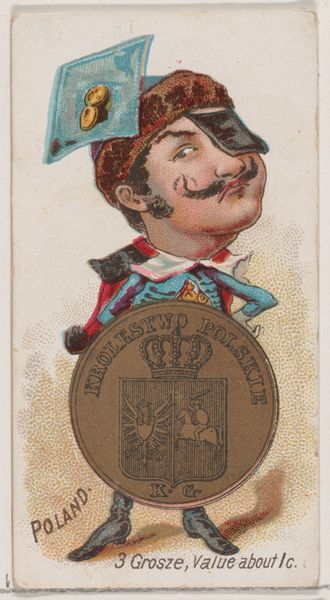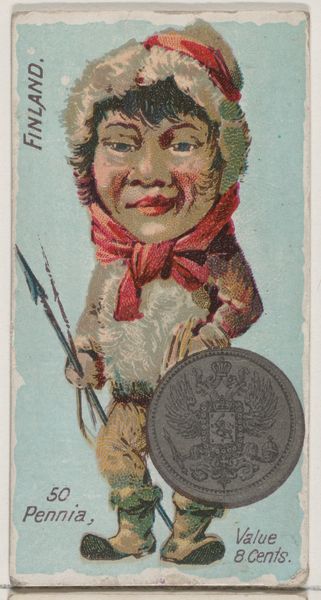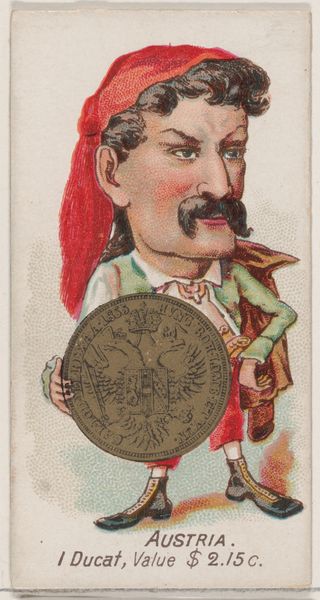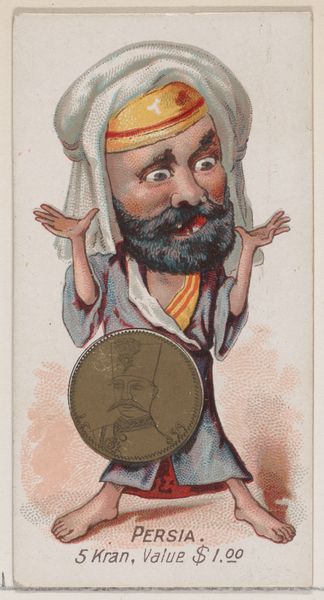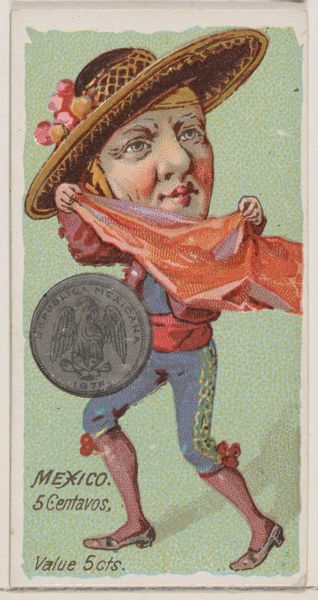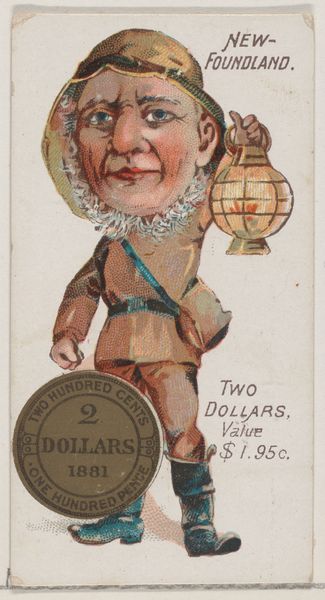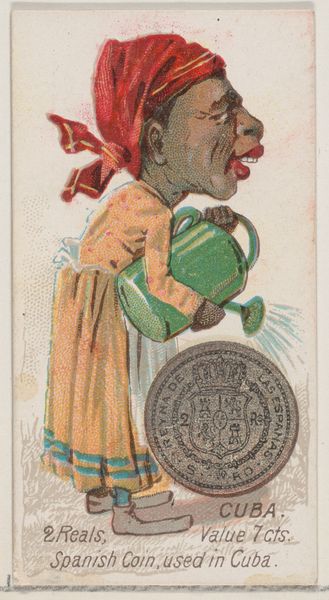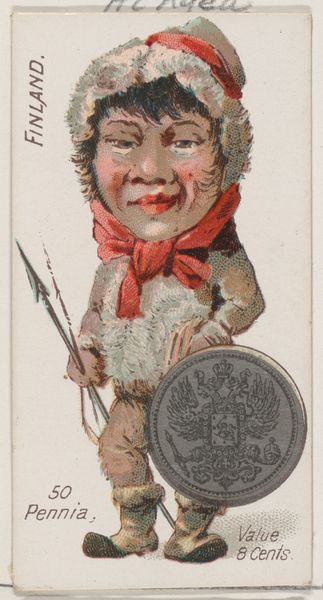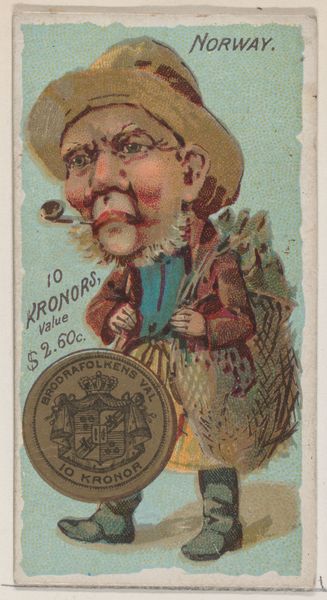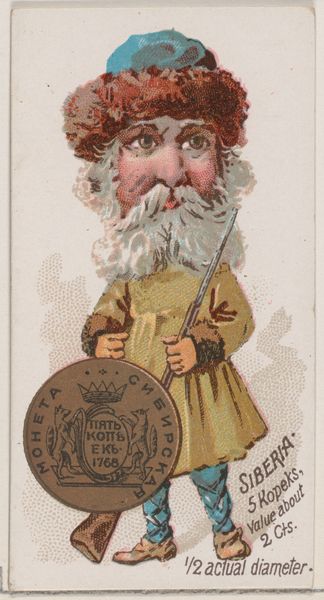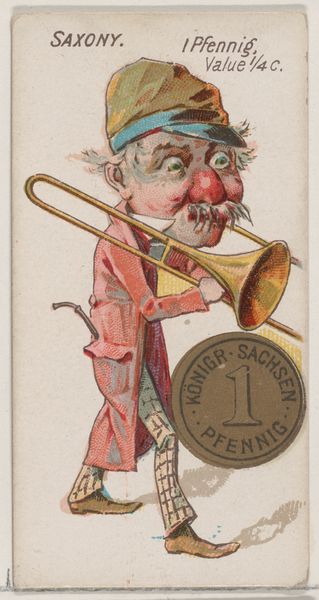
Caricatured Belgian, 50 Centimes, from the series Coins of All Nations (N72, variation 1) for Duke brand cigarettes 1889
0:00
0:00
Dimensions: Sheet: 2 3/4 x 1 1/2 in. (7 x 3.8 cm)
Copyright: Public Domain
Curator: Let’s take a look at this curious caricature. It’s called "Caricatured Belgian, 50 Centimes," and it's from a series called "Coins of All Nations" produced in 1889 for Duke brand cigarettes. Editor: The scale is intimate, almost like a playing card, but the impression is striking. The exaggerated features and that massive coin obscuring half the figure, it’s immediately provocative. The coloring seems intentionally rough. Curator: Yes, it's a chromolithograph – a coloured print made from stone – probably based on coloured pencil drawings. Notice how the process lends a certain texture to the figure's clothing. These cards, inserted in cigarette packs, weren't meant to last, so the emphasis was on cheap production for mass consumption. Editor: Right, mass consumption and the proliferation of harmful stereotypes. I can’t help but feel uneasy seeing Belgium presented this way, as a grotesque figure of national identity. The text emphasizes its worth: "50 Centimes, Value 9 cents." What does that comparison suggest? Is it poking fun at the perceived poverty or perhaps even the insignificance of Belgium at the time? The oversized coin in front seems to amplify this sentiment. Curator: It could be argued it’s simply capitalist visual shorthand to connect the nation with its monetary representation, reinforcing consumer engagement, rather than political commentary. The production and consumption are directly linked to branding a luxury commodity – tobacco – and fostering global trade narratives via mass marketing. Editor: I see what you mean, but let's not ignore the wider implications. The period saw rising nationalism, colonialism, and frankly, some rather unpleasant portrayals of various nations and peoples. The fact that this caricature was intended for popular consumption says something about the normalisation of those ideas and sentiments during the era. It perpetuates power dynamics, defining who is "in" and who is othered. Curator: It’s certainly food for thought, how these seemingly trivial objects can reveal broader manufacturing and historical realities that resonate even now. Editor: Precisely. What was a marketing ploy exposes far more when we analyze its socio-political threads. It urges us to be critically aware, and I suppose, careful of what products we consume.
Comments
No comments
Be the first to comment and join the conversation on the ultimate creative platform.
